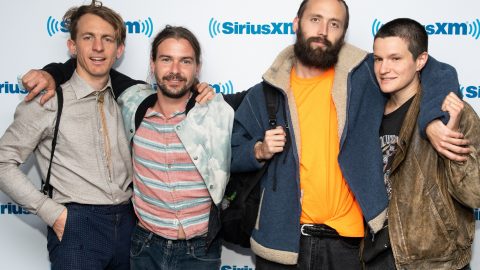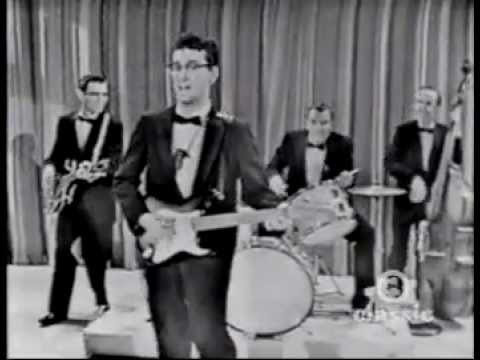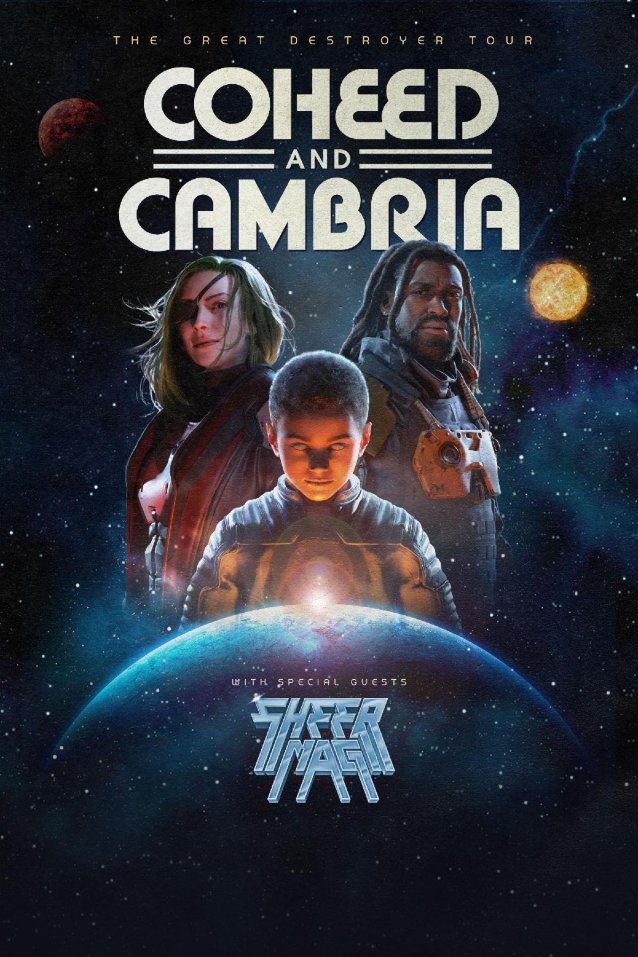
As soon as When We Were Young was announced back in January, would be attendees across social media dubbed it “emo fyre-fest”. To be fair, there was a myriad of reasons naysayers had doubts: the festival would be taking place in the middle of the desert off the Las Vegas strip, and the jam-packed post-punk line-up of over 60 bands seemed impossible considering it would all have to take place in just 12 hours.
Still, last weekend on Saturday, October 22, it seemed the impossible was finally going to take place. But, unfortunately, the first day of the fest was cancelled due to a high-wind advisory in Nevada, leaving would-be attendees wary about whether or not When We Were Young was ever going to live up to its hype.
Luckily, on Sunday, October 23, as gates finally open, it’s clear that the emo scene’s new music festival would defy the worst expectations, proving the impossible possible, and making many naysayers wish they’d snagged tickets.

Right off the bat, the festival stays true to its marketing with early-aughts emo favourites like Mayday Parade and Boys Like Girls giving fans the day’s first dose of nostalgia. Mayday Parade’s lead singer Derek Sanders makes sure to emphasize the lyrics “I had a dream last night / We drove out to see Las Vegas” from their 2007 hit ‘Jamie All Over’ to the crowd’s glee.
Later on the festival’s Pink Stage, Boys Like Girls lead singer Martin Johnson wants fans to have an authentic 2006 experience when he awkwardly stops playing ‘The Great Escape’ mid-way, asking the audience to stop recording the performance and put their phones away.
Part of the genre-focused music festival’s best moments comes by way of inevitable live collaborations, and Sunday’s acts deliver. Kellin Quinn of Sleeping with Sirens joins Pierce The Veil to rock out to ‘King For The Day’. As the sun goes down, Taking Back Sunday brings out unlikely guest DJ Steve Aoki to perform their new single ‘Just Us Two’ — a confusing choice for many audience members who aren’t aware of the collab. The best surprise moment, however, comes by way of All Time Low’s lead singer Alex Gaskarth and lead guitarist Jack Barakat joining Avril Lavigne to cover Blink-182’s pop-punk classic ‘All The Small Things’ as “elder emos” with their younger counterparts in the crowd collectively losing their minds.

Lavigne delivers fan favourites ‘Girlfriend’ and ‘My Happy Ending’ with a wild burst of energy, but it’s clear she’s battling sound issues that plague most of the artists’ sets throughout the day. But sound issues can’t stand against the pop-punk princess, belting out the ballad, ‘Bite Me’ — a moment that also sees her bringing out fiancée and fellow musician Mod Sun — before transporting the audience back to 2002 with an acoustic track off her first record ‘I’m with You’.
As the night dwindles on and a desert chill creeps up on fans, it’s clear festival goers in the pit are starting to feel the toll of the long day. But that all changes when Bring Me The Horizon take the Black Stage, electrifying the tiring crowd.
Opening with ‘Can You Feel My Heart’, lead singer Oli Sykes screams his heart out and riles up an amassing crowd of thousands of people to jump, mosh, punch and scream along. Sykes even taunts the crowd, shouting, “now if you don’t jump, you’re a fucking shithead!” By the middle of their set, the whole crowd is roaring the lyrics of ‘Shadow Moses’ back at the Bring Me The Horizon while stage flames frame the head-banging band, right before the intense yearning of ‘Drown’ turns the notch up on the energy levels at the Las Vegas Festival Grounds.

The most exciting acts of the night are, unsurprisingly, the most anticipated headliners: Paramore and My Chemical Romance, two bands that have paved the way for and inspired most of the bands on the lineup.
Paramore shocks the crammed crowd, opening with the live debut of deep-cut ‘All I Wanted’ — a song they usually don’t play live due to the strain it puts on vocalist Hayley Williams. Of course, Williams nails it and hits each high note with expert precision. Another notable addition to Paramore’s setlist is arguably one of the best of their discography: ‘Last Hope’, a track that feels cinematic against the backdrop of Las Vegas lights.
True to herself, Williams takes her precious time on stage, reflecting on what everyone is celebrating at When We Were Young. “Tonight we’re celebrating emo,” Williams starts before delving into the scene’s history. “ … But we got lost along the way and, in the early 2000s, when Paramore came onto the scene … the scene was not always a safe place to be if you were different.” The formidable frontwoman goes on to explain how emo music has often been a space for white cis men. As Paramore builds into their breakthrough hit ‘Misery Business’ Williams promises to always provide a safe space for “young women, people of colour and the queer community.”

Finally, emo scene founding fathers My Chemical Romance take the stage. In a hilarious subversion and nod to the festival name, lead singer Gerard Way not only dresses in his classic early 2000s era black suit and red tie, but also wears ageing makeup and prosthetics. The band brings a whole new meaning to “elder emo,” almost as if to remind fans “we’re not young anymore, and neither are you.”
Elder emo status aside, MCR still shows the crowd of 60,000 fans they can bring new life to old favourites. ‘I’m Not Okay (I Promise)’ and ‘Helena’ take on a fresh light with the band still leaning into the theatrical stage presence they’re known for. The band performs a setlist that encompasses most of their varied discography, but they notably (and thankfully) don’t play new songs. This calculated feat continues until the band closes the night with ‘Vampire Money’, leaving revellers in a hazy glow of nostalgia, joy, and fireworks that fill up the Vegas sky on the last note.
It takes a lot to live up to the hype and pull of what many thought was impossible, but as fans head into the desert in the checkered vans with wide smiles across their faces, it’s safe to say the emo fest not only incited nostalgia, but is evident of a more inclusive post-punk future.
The post When We Were Young 2022 review: the nostalgic emo-fest reigns in a new age appeared first on NME.








